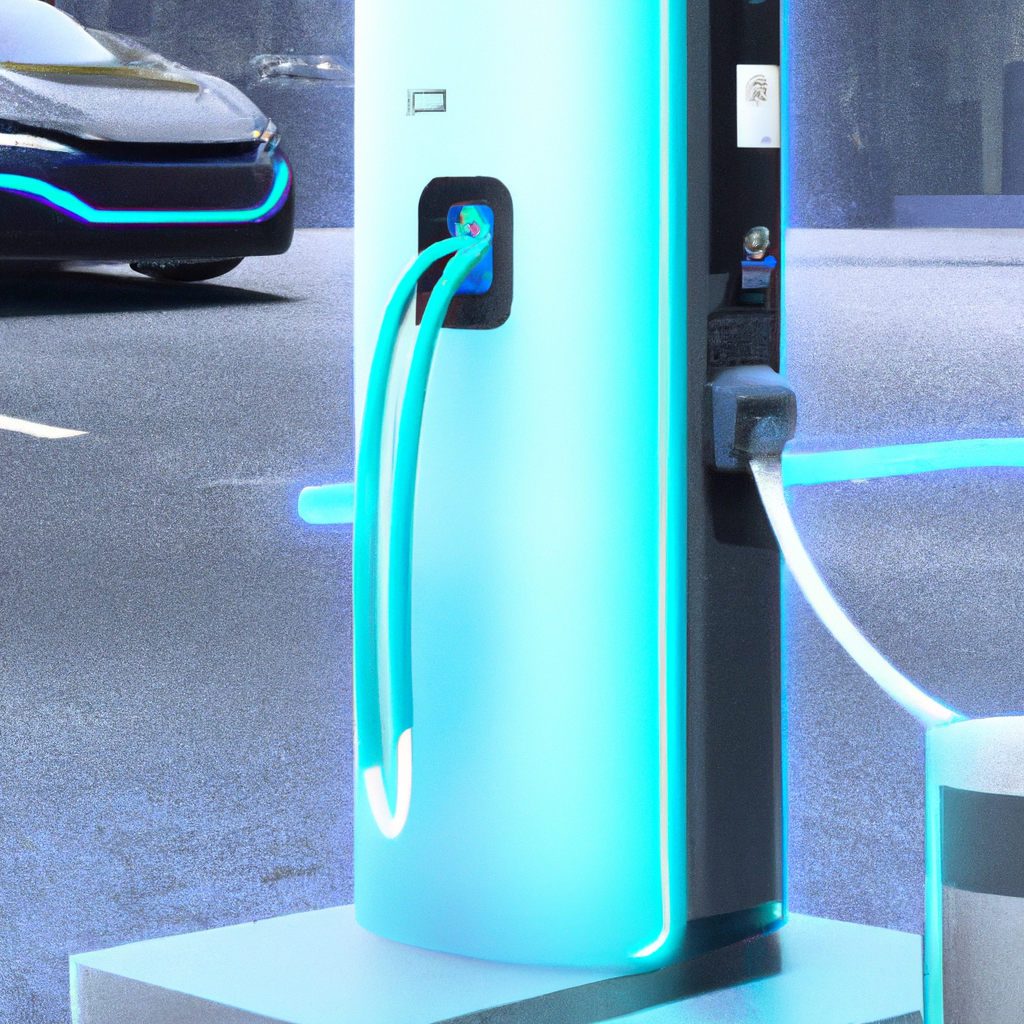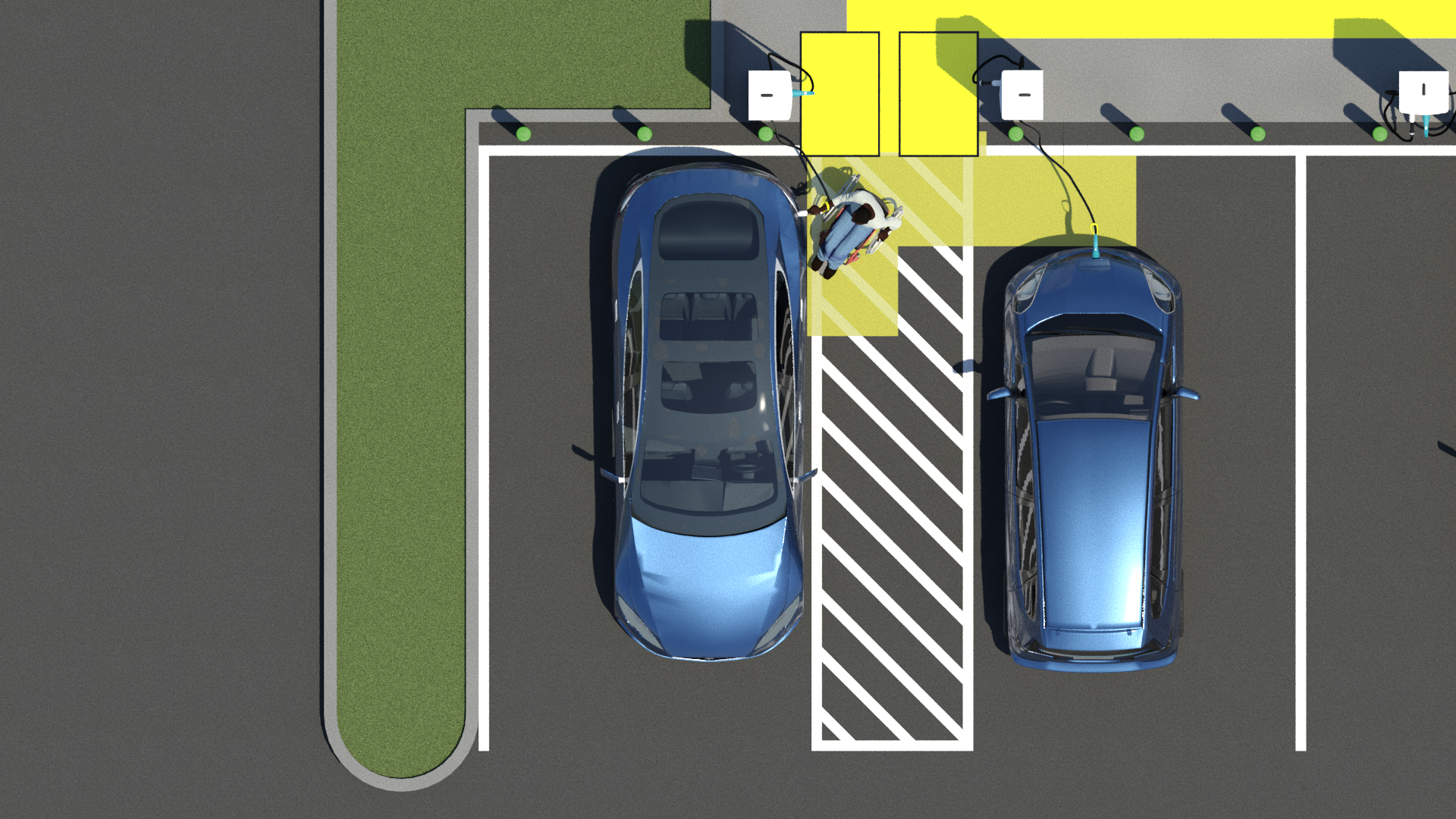EV Charger Apps And Payment Systems: User-Friendly Solutions
October 22, 2023 | by Jacob Kang

Are you tired of the hassle that comes with finding and paying for an EV charging station? Well, you’re in luck! In this article, we will discuss the user-friendly solutions offered by EV charger apps and payment systems. From convenient charging station locators to seamless payment methods, these technologies are making it easier than ever for electric vehicle owners to stay charged up on the go. So, if you’re ready to take the stress out of charging your EV, keep reading to discover the innovative solutions that are revolutionizing the way we power our cars.
1. The Rise of Electric Vehicles
Electric vehicles (EVs) have been gaining immense popularity in recent years, as more and more people seek to reduce their carbon footprint and embrace sustainable transportation options. With advancements in technology and increased awareness about environmental issues, the transition to electric vehicles has become a global movement.
1.1 The Growing Popularity of Electric Vehicles
The surge in electric vehicle adoption can be attributed to several factors. First and foremost, concerns about climate change and air pollution have prompted individuals and governments to explore cleaner and greener alternatives to traditional gasoline-powered vehicles. Electric vehicles produce zero tailpipe emissions, making them an attractive choice for eco-conscious individuals.
Additionally, the advancements in battery technology have contributed to the widespread acceptance of electric vehicles. Improved battery efficiency, longer range, and faster charging times have addressed the concerns related to range anxiety, where drivers were hesitant to switch to electric vehicles due to limited charging infrastructure and fear of running out of power during their journeys.
Moreover, electric vehicles are now more affordable and accessible to a wider audience. Government incentives, tax rebates, and subsidies have significantly reduced the upfront cost of electric vehicles, making them a financially viable option for many consumers. As a result, the demand for electric vehicles continues to rise.
1.2 The Need for Convenient Charging Solutions
While the benefits of electric vehicles are evident, the lack of convenient and reliable charging infrastructure remains a significant obstacle for widespread adoption. To overcome this challenge, it is essential to develop user-friendly EV charger apps and payment systems that simplify the charging process and enhance the overall user experience.
2. Introduction to EV Charger Apps and Payment Systems
As the demand for electric vehicles grows, so does the need for efficient charging solutions. EV charger apps and payment systems play a crucial role in facilitating seamless and hassle-free charging experiences for electric vehicle owners.
2.1 What are EV Charger Apps?
EV charger apps are mobile applications designed to help electric vehicle owners locate and access charging stations conveniently. These apps provide a range of features and functionalities that enable users to find available charging stations, check charger availability in real-time, and initiate charging sessions with ease.
2.2 Importance of Easy-to-Use Apps for EV Charging
A user-friendly EV charger app is essential for creating a positive charging experience. The simplicity and intuitiveness of the app interface can significantly impact the overall user satisfaction. By providing clear and concise instructions, easy navigation, and intuitive design, EV charger apps ensure that users can locate, use, and pay for charging services effortlessly.
2.3 Understanding Payment Systems for EV Charging
Payment systems for EV charging refer to the various methods and platforms through which electric vehicle owners can pay for their charging sessions. These systems offer a range of options, from traditional credit card payments to subscription-based models and smartphone-enabled payments.
The convenience and security of payment systems are crucial factors to consider when choosing a charging service. EV charging payment systems need to be user-friendly, secure, and compatible with various payment methods to cater to the diverse needs of electric vehicle owners.

3. Key Features of User-Friendly EV Charger Apps
To provide a seamless and user-friendly charging experience, EV charger apps should offer a range of key features that enhance convenience, accessibility, and reliability for electric vehicle owners.
3.1 Reliable Charging Network Information
One of the essential features of an EV charger app is the ability to provide accurate and up-to-date information about charging networks and stations. Users should be able to rely on the app to find trustworthy information about the availability and compatibility of charging stations, ensuring that they can plan their journeys with confidence.
3.2 Real-Time Charger Status Updates
To avoid unnecessary detours and waiting times, it is crucial for EV charger apps to provide real-time updates about the availability of charging stations. Users should be able to view the status of charging points, including whether they are occupied or available, enabling them to make informed decisions about where to charge.
3.3 Reservation and Queue Management
In busy or high-demand charging locations, the ability to reserve a charging station in advance can be a valuable feature. EV charger apps that offer reservation and queue management functionalities allow users to secure a charging spot before they arrive, minimizing the wait time and maximizing convenience.
3.4 Integration with Navigation and Route Planning
Integration with navigation and route planning systems is another crucial feature of user-friendly EV charger apps. By seamlessly integrating with existing navigation platforms, such as Google Maps, EV charger apps can provide users with optimized routes that include charging stops along the way. This integration ensures that EV owners can easily locate and plan charging stops during their journeys.
3.5 Personalized Charging Preferences
Every electric vehicle owner has unique charging preferences and requirements. A user-friendly EV charger app should allow individuals to personalize their charging settings, such as setting charging limits, selecting preferred charging stations, and receiving notifications when their vehicle is fully charged. This level of customization enhances the user experience and caters to the specific needs and preferences of each user.
3.6 Assistance with Plug Authentication
Plug authentication can be a tedious process, especially for first-time electric vehicle owners. User-friendly EV charger apps should offer assistance and guidance for plug authentication, providing clear instructions on how to connect and authenticate the charging cable to ensure a successful charging session.
3.7 User Reviews and Ratings
To help users make informed decisions about charging stations, user reviews and ratings are invaluable. EV charger apps that incorporate user-generated feedback and ratings provide a transparent and reliable source of information for electric vehicle owners. Users can benefit from the experiences and insights shared by other users, helping them identify the best charging options for their needs.
3.8 Accessible Customer Support
In the event of any issues or concerns during the charging process, accessible customer support is crucial. User-friendly EV charger apps should provide easy access to customer support channels, such as live chat, email, or telephone. Prompt and knowledgeable customer support can address any questions or problems that may arise, ensuring a smooth and satisfactory charging experience for users.
3.9 Multiple Payment Options
To cater to the diverse preferences and payment methods of electric vehicle owners, user-friendly EV charger apps should offer multiple payment options. From credit cards and mobile wallets to subscription-based models and RFID cards, the availability of various payment options ensures that users can select the most convenient and suitable method for their charging sessions.
3.10 Data Analytics and Usage History
User-friendly EV charger apps should provide users with detailed data analytics and usage history. These features allow electric vehicle owners to track and analyze their charging patterns and energy consumption, empowering them to make informed decisions about their charging habits and optimize their overall charging experience.
4. Popular EV Charger Apps on the Market
Several EV charger apps have gained popularity in the market due to their user-friendly interfaces and comprehensive features. Let’s explore some of the top choices available to electric vehicle owners.
4.1 App A: Features, User Experience, and Availability
App A is known for its intuitive design, easy-to-use interface, and robust features. It provides accurate and real-time information about charging networks, availability, and status of charging stations. With seamless integration with navigation systems, App A ensures that users can navigate and plan their routes effectively, including charging stops.
Furthermore, App A offers personalized charging preferences, allowing users to customize their settings and receive notifications when their vehicle is fully charged. The app also includes user reviews and ratings, providing valuable insights to help users choose the best charging stations. With multiple payment options and accessible customer support, App A offers a comprehensive solution for electric vehicle owners.
4.2 App B: Features, User Experience, and Availability
App B distinguishes itself with its extensive charging network coverage and up-to-date information. It provides reliable charging station information and real-time updates about charger availability. The app’s user-friendly interface makes it effortless for users to navigate and find the nearest charging station.
In addition, App B offers convenient reservation and queue management capabilities, ensuring that users can secure a charging spot in advance and minimize waiting times. The app integrates seamlessly with navigation systems, providing optimized routes that include charging stops. With its customizable charging preferences, user reviews, and multiple payment options, App B offers a compelling choice for electric vehicle owners.
4.3 App C: Features, User Experience, and Availability
App C stands out for its emphasis on personalized charging experiences. It allows users to set unique preferences and receive notifications based on their specific charging requirements. The app provides comprehensive information about charging networks, including charger compatibility and availability.
Moreover, App C offers real-time charger status updates, enabling users to identify available charging stations effortlessly. The app integrates with navigation and route planning systems, helping users optimize their journeys with charging stops along the way. With its reliable customer support, multiple payment options, and user reviews, App C offers a user-friendly solution for electric vehicle owners.
4.4 App D: Features, User Experience, and Availability
App D focuses on simplicity and efficiency, providing users with a straightforward and intuitive interface. The app offers accurate and reliable information about charging stations and networks, allowing users to easily locate and access the nearest charging points.
Furthermore, App D includes real-time updates about charger availability, enabling users to plan their charging sessions effectively. The app integrates seamlessly with navigation systems, ensuring optimized routes that include charging stops. With its user-friendly design, payment options, and accessible customer support, App D provides a streamlined solution for electric vehicle owners.

5. Benefits of User-Friendly Payment Systems for EV Charging
In addition to user-friendly EV charger apps, user-friendly payment systems are an essential component of a seamless and convenient charging experience. Let’s explore the benefits of having payment systems that cater to the needs and preferences of electric vehicle owners.
5.1 Seamless and Secure Payment Processes
User-friendly payment systems for EV charging ensure that the payment process is seamless and secure. By integrating with various payment methods, such as credit cards, mobile wallets, and RFID cards, these systems allow users to complete transactions effortlessly, eliminating the hassle of carrying cash or worrying about the security of personal information.
5.2 Integration with Existing Payment Methods
To enhance convenience and user satisfaction, user-friendly payment systems should integrate with existing payment methods that electric vehicle owners are familiar with. By accepting major credit cards, mobile payment apps, and widely used payment platforms, these systems ensure that users can utilize their preferred payment methods without any inconvenience or additional setup.
5.3 Billing Transparency and Detailed Invoices
Transparency and accountability are crucial for user-friendly payment systems. Electric vehicle owners should have access to detailed invoices and billing information, allowing them to track their charging expenses and have a clear understanding of the costs associated with charging their vehicles. This transparency fosters trust and promotes informed decision-making.
5.4 Subscription and Membership Options
User-friendly payment systems often offer subscription plans or membership options to provide additional benefits and cost savings for electric vehicle owners. These plans can include discounted charging rates, priority access to charging stations, or exclusive rewards programs. Subscription and membership options enhance the overall value proposition for users and incentivize long-term usage of the charging services.
5.5 Incentives and Rewards Programs
User-friendly payment systems may incorporate incentives and rewards programs to encourage more sustainable transportation choices. By rewarding electric vehicle owners for their charging activities, such as earning loyalty points that can be redeemed for future charging sessions or discounts at partnering merchants, these programs create a positive and engaging charging experience.
5.6 Integration with Expense Tracking and Reporting
To simplify expense tracking and reporting, user-friendly payment systems can integrate with expense tracking tools and software. This integration allows electric vehicle owners to effortlessly categorize and track their charging expenses, providing valuable insights into their overall transportation costs.
5.7 International Payment Compatibility
As electric vehicles gain traction worldwide, user-friendly payment systems should offer international payment compatibility. This ensures that international travelers can charge their vehicles seamlessly regardless of their home country’s payment standards or currency. User-friendly payment systems that cater to global payment methods promote inclusivity and accessibility for electric vehicle owners from various regions.
6. Top Payment Systems for EV Charging
Various payment systems have emerged to cater to the diverse needs and preferences of electric vehicle owners. Let’s explore some of the top payment systems available in the market.
6.1 Payment System A: Features, Integration, and Supported Platforms
Payment System A is renowned for its seamless integration with EV charger apps and comprehensive payment options. It supports major credit cards, mobile wallets, and RFID cards, providing users with flexibility and convenience. The payment system offers transparent billing and detailed invoices, allowing users to track their charging expenses effectively. With its user-friendly interface and compatibility with multiple platforms, Payment System A offers an efficient and accessible payment solution for electric vehicle owners.
6.2 Payment System B: Features, Integration, and Supported Platforms
Payment System B stands out for its user-friendly interface and the integration capabilities with various EV charger apps. It supports a wide range of payment methods, including contactless payments, tokenization, and digital wallets, enabling users to select their preferred payment options. Payment System B provides detailed transaction histories and customizable reporting features, facilitating expense tracking and reporting. With its compatibility across different platforms, Payment System B offers a reliable payment solution for electric vehicle owners.
6.3 Payment System C: Features, Integration, and Supported Platforms
Payment System C is widely recognized for its international payment compatibility and secure transactions. It supports a diverse range of payment methods, including international credit cards and alternative payment options, catering to the global audience of electric vehicle owners. Payment System C prioritizes security and data privacy, ensuring that users’ personal and financial information is protected. With its user-friendly interface and compatibility with popular EV charger apps, Payment System C offers a robust and convenient payment solution for electric vehicle owners.

7. Factors to Consider When Choosing an EV Charger App
When deciding which EV charger app to choose, several factors should be taken into account. Let’s explore some critical considerations that can help electric vehicle owners make informed decisions.
7.1 Compatibility with Charger Types and Networks
Before selecting an EV charger app, it is essential to ensure its compatibility with the charger types and networks prevalent in your region. The app should seamlessly integrate with different charger providers, allowing users to access a wide range of charging stations and networks.
7.2 User-Friendly Interface and Intuitive Design
A user-friendly interface and intuitive design are crucial factors to consider when choosing an EV charger app. The app should have clear navigation, easy-to-understand instructions, and a clean layout, ensuring a seamless and enjoyable user experience.
7.3 App Ratings and User Reviews
Evaluating app ratings and reading user reviews is an excellent way to determine the reliability and performance of an EV charger app. Feedback from other electric vehicle owners can provide valuable insights into the app’s functionality, customer support, and overall user satisfaction.
7.4 Availability and Coverage
The availability and coverage of an EV charger app should align with your geographic location and travel patterns. Ensure that the app offers an extensive charging network in the areas you frequent, minimizing the risk of encountering charging infrastructure limitations during your journeys.
7.5 Additional Features and Integrations
Consider the additional features and integrations offered by the EV charger app. Features such as real-time charger status updates, reservation capabilities, navigation integrations, and personalized charging preferences enhance the overall user experience and convenience.
7.6 Compatibility with Operating Systems
Ensure that the EV charger app is compatible with your specific operating system, whether it is iOS or Android. Compatibility ensures that you can download and use the app seamlessly on your smartphone or tablet, regardless of the device you own.
8. Factors to Consider When Choosing a Payment System
Selecting the right payment system is crucial for a seamless and secure charging experience. Consider the following factors when choosing a payment system for your EV charging needs.
8.1 Compatibility with Charger Networks
Ensure that the payment system is compatible with the charger networks prevalent in your area. Compatibility ensures that you can use your preferred payment method across a wide range of charging stations and systems.
8.2 Security and Data Privacy
Evaluate the security protocols and data privacy measures implemented by the payment system. Look for features such as encryption, secure tokenization, and adherence to industry standards to ensure the protection of your personal and financial information.
8.3 Transaction Fees and Pricing Models
Compare the transaction fees and pricing models offered by different payment systems. Consider the overall cost of using the payment system, including any monthly subscription fees, transaction fees, or additional charges associated with specific payment methods.
8.4 Supported Payment Methods
Ensure that the payment system supports your preferred payment methods, whether it is credit cards, mobile wallets, or other digital payment options. The system should offer flexibility and accommodate the payment methods that are convenient for you.
8.5 Mobile Apps and Web Platforms
Consider whether the payment system offers a mobile app and web platform for convenient access and usage. A user-friendly and intuitive interface across both mobile and web platforms ensures that you can manage your payments and track your charging expenses effectively.
8.6 Customer Support and Assistance
Evaluate the availability and quality of customer support offered by the payment system. Prompt and knowledgeable customer support can address any issues or concerns that may arise during the payment process, ensuring a positive experience for the users.

9. User Experiences and Testimonials
To gain further insights into the effectiveness and user-friendliness of EV charger apps and payment systems, let’s explore some user experiences and testimonials.
9.1 User A’s Experience with EV Charger App X
User A, an electric vehicle owner, shares their positive experience with EV Charger App X. They mention how the app’s intuitive design and real-time updates about charger availability have simplified their charging process. User A also appreciates the personalized charging preferences and reliable customer support offered by the app, making their overall charging experience seamless and convenient.
9.2 User B’s Experience with Payment System Y
User B, another electric vehicle owner, recounts their experience with Payment System Y. They highlight the system’s seamless transaction process and compatibility with various payment methods, allowing them to choose the most convenient option for their charging sessions. User B also praises the detailed invoicing and expense tracking features, facilitating accurate monitoring and management of their charging expenses.
9.3 User C’s Recommendations for User-Friendly Solutions
User C, an avid electric vehicle enthusiast, shares their recommendations for user-friendly EV charger apps and payment systems. They emphasize the importance of clear and concise instructions, accurate charger information, and customizable settings that cater to individual preferences. User C also suggests that payment systems offer diverse payment options and integrate with popular expense tracking software to enhance the overall user experience.
10. Future Trends and Innovations in EV Charger Apps and Payment Systems
As the electric vehicle market continues to evolve, so do the trends and innovations in EV charger apps and payment systems. Let’s explore some of the future advancements and possibilities in this space.
10.1 Integration with Smart Grid and Energy Management Systems
The integration of EV charger apps and payment systems with smart grid and energy management systems is expected to increase in the future. This integration enables electric vehicle owners to optimize their charging sessions based on grid demand, renewable energy availability, and energy pricing. By leveraging real-time data and analytics, smart grid integration ensures efficient and sustainable charging experiences.
10.2 Artificial Intelligence and Predictive Analytics
Artificial intelligence and predictive analytics are poised to revolutionize EV charger apps and payment systems. These technologies can analyze data from various sources, such as user preferences, charger availability, and energy demand patterns, to provide personalized recommendations and optimize charging experiences. AI-powered systems can anticipate charging requirements and dynamically adjust charging plans, maximizing convenience and efficiency for electric vehicle owners.
10.3 Enhanced User Interfaces with Augmented Reality
Augmented reality (AR) has the potential to enhance user interfaces and provide interactive and immersive charging experiences. EV charger apps can leverage AR technology to guide users to the nearest charging stations, overlay real-time charger status information onto physical objects, and provide step-by-step instructions for plug authentication. These features create a futuristic and engaging user experience, making EV charging more accessible and enjoyable.
10.4 Wireless Charging and Automatic Payment Systems
The development of wireless charging technology is expected to transform the charging landscape. EV charger apps and payment systems will need to incorporate support for wireless charging systems, enabling seamless and automatic charging sessions. With the integration of wireless charging and automatic payment systems, electric vehicle owners can charge their vehicles effortlessly without the need for physical connections or manual payment processes.
10.5 Collaborations and Partnerships for Enhanced Charging Ecosystems
Collaborations and partnerships between EV charger apps, payment systems, charging infrastructure providers, and electric vehicle manufacturers are anticipated to shape the future of charging ecosystems. These collaborations can lead to seamless integrations, interoperability between systems, and standardized charging experiences. Enhanced charging ecosystems provide users with a seamless and interconnected network of chargers, streamlined payment processes, and improved user experiences.
In conclusion, user-friendly EV charger apps and payment systems play a vital role in facilitating the transition to electric vehicles by simplifying the charging process and enhancing the overall user experience. With features such as reliable charging network information, real-time charger status updates, personalized preferences, and multiple payment options, these solutions ensure seamless and convenient charging experiences for electric vehicle owners. As the electric vehicle market continues to grow, advancements in technology and collaborations within the industry will lead to even more user-friendly solutions, making electric vehicle ownership the sustainable and convenient choice for transportation.

RELATED POSTS
View all


